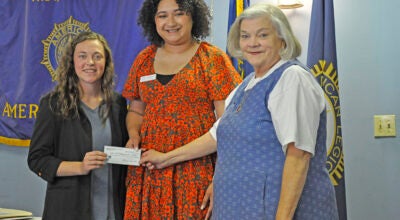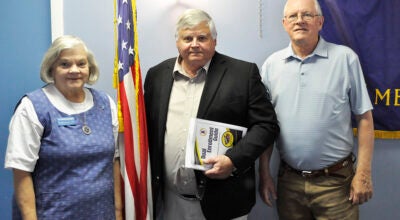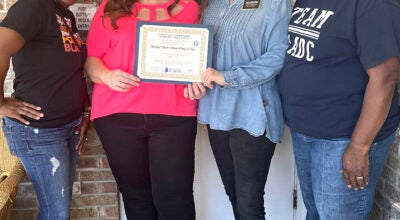Museum’s moon tree celebrates 34 years
Published 8:04 pm Friday, July 30, 2010
With the hot, humid weather that seems to be here to stay, Jerry Peak, director of the Pioneer Museum of Alabama isn’t taking any chances with the museum’s Moon Tree.
“We were told that no special care is needed for the Moon Tree, but a little water won’t hurt,” Peak said, as he carried water to the tree in a watering can. “You can’t be too careful.”
Peak said the Moon Tree often attracts the interest of visitors to the museum.
“They ask, ‘What’s a Moon Tree?” and they seemed a little surprised when I tell them that it’s a loblolly pine that was grown from seeds that went to the moon,” Peak said. “Most people think that Moon Tree is just the name of a certain tree, like oak or sycamore.”
Although some visitors inquire about the Moon Tree at the Pioneer Museum of Alabama, Peak said probably most Pike Countians aren’t aware of the tree with such scientific and historical significance right here in their midst.
Apollo 14 launched on Jan. 31, 1971 and five days later Alan Shepard and Edgar Mitchell walked on the Moon while Stuart Roosa, a former U.S. Forest Service smoke jumper, orbited above the command module. Packed in small containers in Roosa’s personal kit were hundreds of tree seeds, which were part of a joint NASA/USFA project.
“When Apollo 14 returned to Earth, the seeds were germinated by the Forest Service and called Moon Trees,” Peak said. “The seedlings were planted throughout the United States and at seven locations in Alabama.”
Five sycamores and two pines were planted at the U.S. Space and Rocket Center in Huntsville and a sycamore and a loblolly pine were planted at the G.W. Andrews Forestry Sciences Lab at Auburn University. A sycamore was planted at Birmingham’s Botanical Garden and loblolly pines at the state capitol in Montgomery, the veterans’ hospital at Tuskegee, Ivy Green in Tuscumbia and the Pioneer Museum of Alabama in Troy.
“The loblolly pine was the seedling chosen for the White House in Washington, D.C.,” Peak said.
“Other seedlings that were chosen as Moon Trees were the sweetgum, Douglas fir, and the redwood.”
Peak said the Pioneer Museum of Alabama is proud to have been chosen as a site for the planting of a tree that was grown from a seed that traveled to the moon.
“I’m not sure why the Pioneer Museum of Alabama was chosen as a site for a Moon Tree,” Peak said.
“But, from what I’ve heard, Curren Farmer, who was the founder of the museum and Dr. Ralph Adams, chancellor of Troy State College were good friends. Mr. Farmer and the director of NASA were friends so, perhaps, that’s how the museum was chosen.”
The museum’s Moon Tree was planted on August 5, 1976 as part of the country’s Bicentennial celebration.
“This week, we can celebrate the Moon Tree’s 34th year here at the Pioneer Museum of Alabama,” Peak said.
“So this is a good time to draw attention to Pike County’s Moon Tree. We invite everyone to visit the museum this week and to take time to seek out the Moon Tree that stands as a tribute to astronaut Roosa and the Apollo program.”





